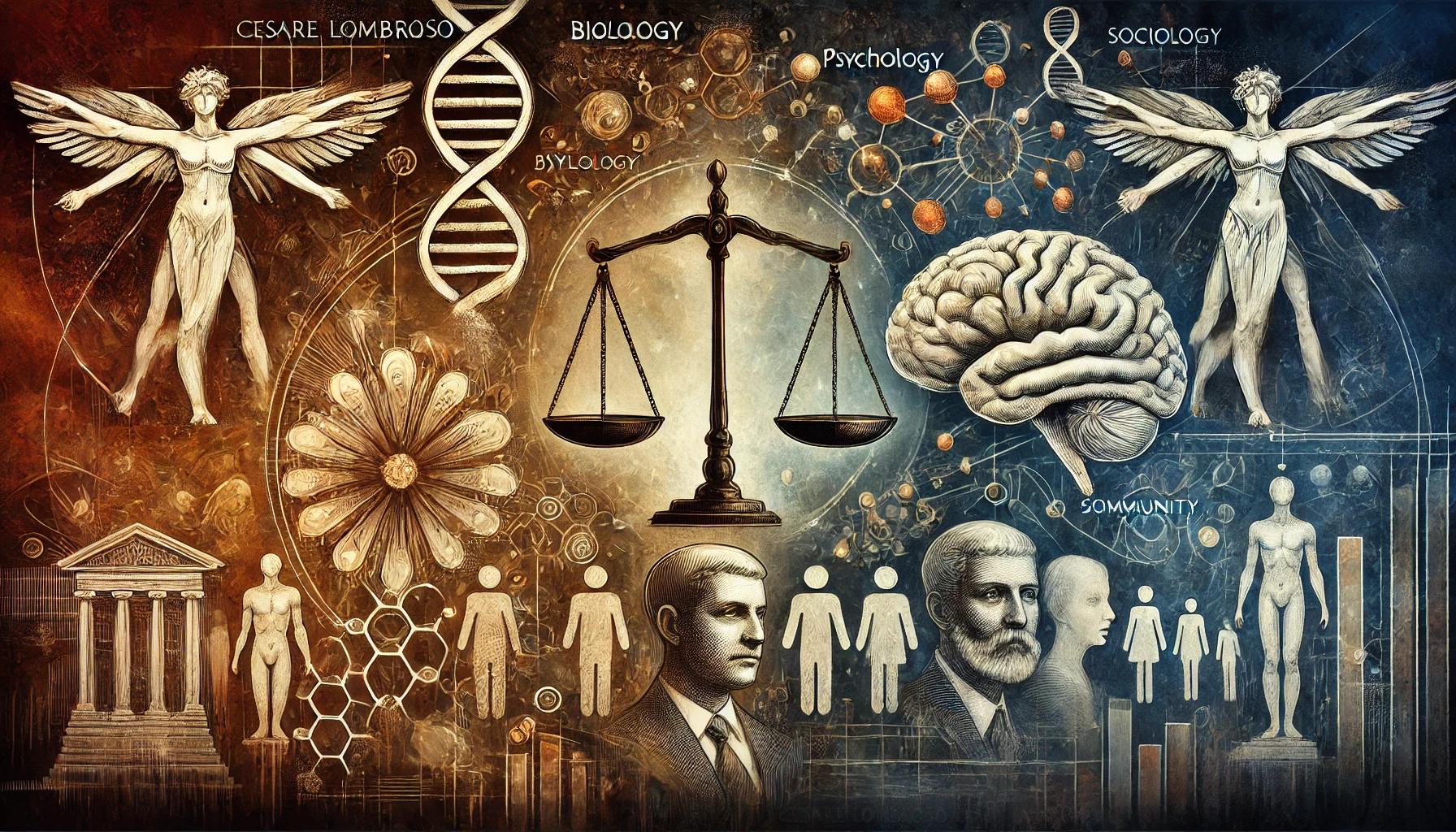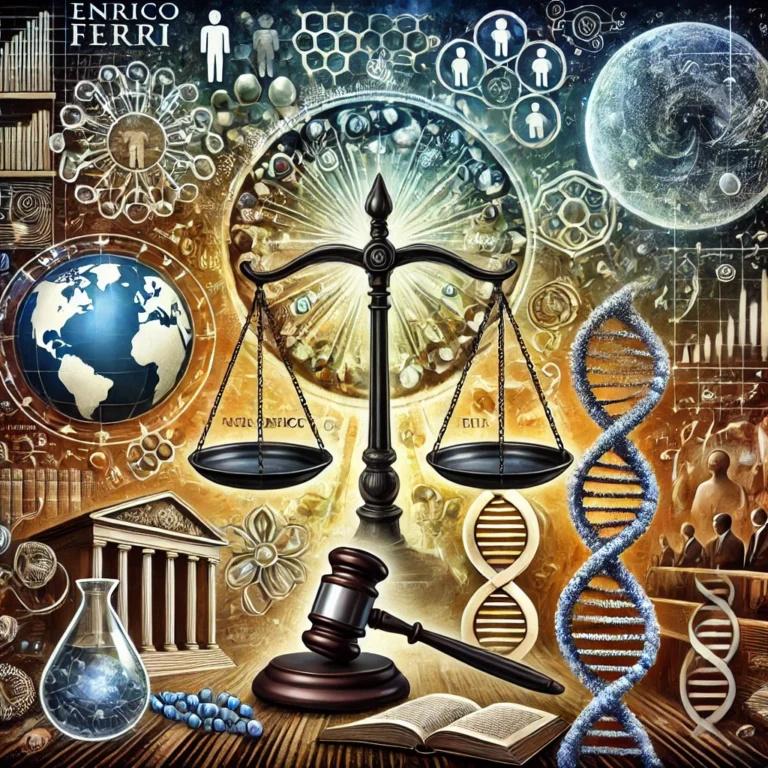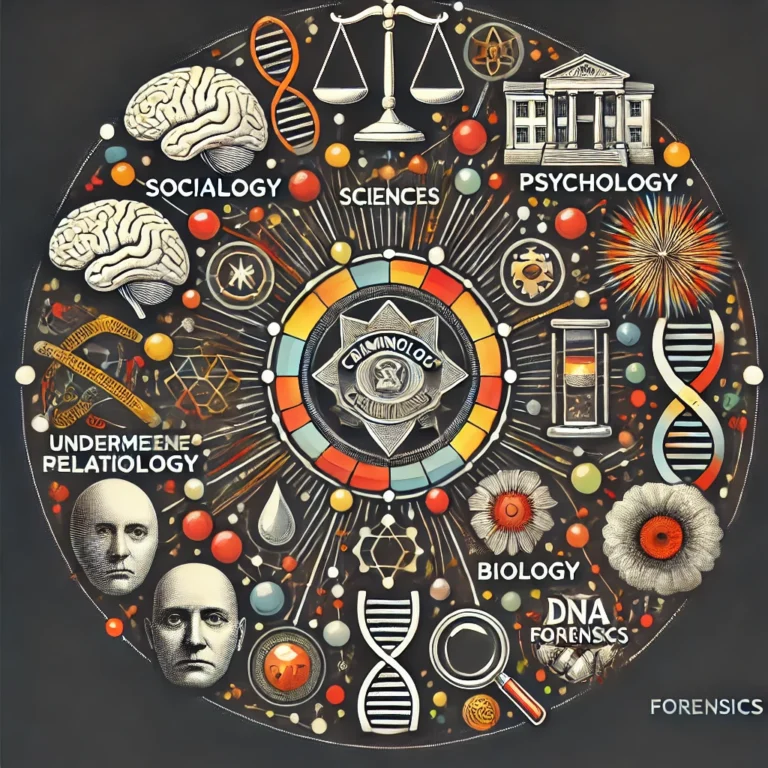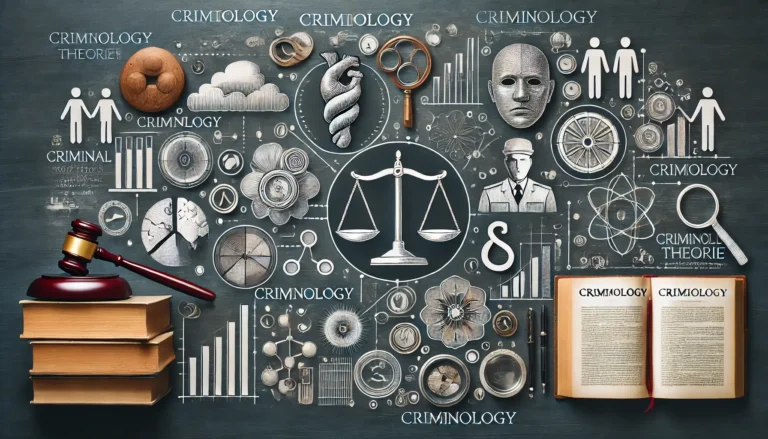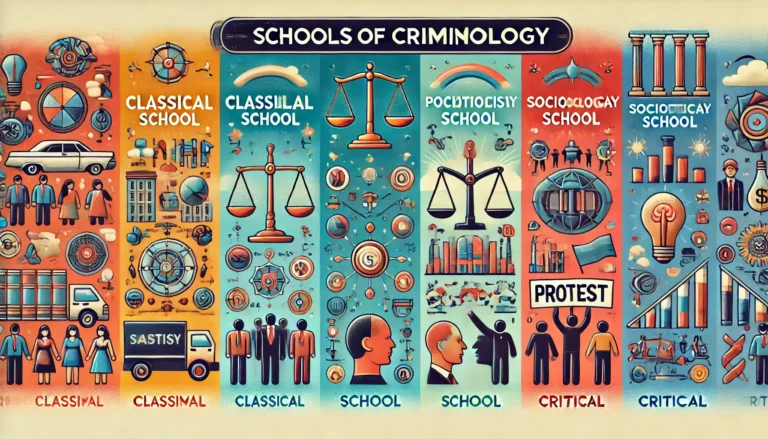criminal behavior LOMBROSO: the formative school
The concept of the “Formation School” represents one of the most prominent stages in the evolution of criminology. It focuses on understanding the causes of crime based on the biological, psychological, and social constitution of the individual. This school studies crime as a phenomenon that can be analyzed through interconnected factors, offering a more comprehensive perspective on criminal behavior. The Formation School emerged in two main phases: the Classical Formation School and the Modern Formation School, each contributing significant scientific and theoretical advancements to our understanding of crime.
First Section: The Classical Formation School
Subsection 1: LOMBROSO ’s Theory
CESARE LOMBROSO (1835–1909) is regarded as one of the most influential figures in establishing the Classical Formation School. Born in Italy, LOMBROSO studied medicine and anatomy, which enabled him to apply scientific approaches to the study of crime. During his work as a prison doctor in Italy, he observed common physical traits among prisoners, such as asymmetrical skulls, large ears, and prominent jaws. Based on these observations, he concluded that these traits reflect a hereditary inclination toward crime.
LOMBROSO ‘s theory emphasized the concept of the “born criminal,” suggesting that some individuals exhibit criminal tendencies regardless of environmental or upbringing factors. He categorized criminals into groups based on their motives and physical traits, proposing that these traits resulted from “evolutionary atavism.” He believed criminals were “biological throwbacks” to earlier stages of human evolution.
While his contributions primarily focused on physical analysis, LOMBROSO also attempted to incorporate psychological elements such as impulsivity and lack of self-control. Despite the radical nature of his theory, it laid the foundation for methodically analyzing criminal behavior beyond purely moral or legal perspectives.
Subsection 2: Evaluation of LOMBROSO ’s Theory
Although LOMBROSO ‘s theory significantly influenced criminology, it faced substantial criticism for its overemphasis on biological factors while neglecting social and psychological dimensions. One of the most significant critiques was the lack of scientific rigor in his studies, as they were based on limited samples of prisoners, leading to unwarranted generalizations.
Moreover, modern research has shown that the physical traits LOMBROSO highlighted are not exclusive to criminals and can also be found in non-criminal individuals. Additionally, his linkage of crime to heredity sparked ethical debates, as the theory was seen as a justification for social and racial discrimination. Nonetheless, LOMBROSO ‘s primary contribution lies in transitioning the study of crime from a philosophical and moral domain to a scientific field grounded in observation and analysis.
Second Section: The Modern Formation School
Subsection 1: The Theory of Criminal Formation by Di TULLIO
Decades after LOMBROSO ‘s ideas, Raphael DI TULLIO advanced the Formation School through the concept of “criminal formation.” Born in Italy, Di TULLIO studied psychology and sociology, enabling him to offer a more integrated perspective on the causes of crime. His theory emphasized the interaction between heredity and environment, arguing that crime results from a complex interplay of biological, psychological, and social factors.
DI TULLIO ’s theory posited that criminal behavior arises not from a single cause but from the dynamic interaction of various factors. He highlighted the role of psychological disturbances, such as repression or emotional trauma, and social conditions, such as poverty and marginalization, in shaping criminal tendencies. This approach added a new dimension to the Formation School by recognizing the importance of the social and psychological context in explaining criminal behavior.
Subsection 2: The Theory of Multiple Causes by Enrico FERRI
Enrico FERRI (1856–1929), one of LOMBROSO ‘s most prominent students, expanded the scope of the Formation School through his theory of multiple causes. FERRI argued that crime is a multifaceted phenomenon influenced by biological factors (e.g., heredity and physical disorders), psychological factors (e.g., emotions and motivations), and social factors (e.g., poverty and education).
FERRI introduced the concept of “causal equilibrium,” suggesting that each criminal case results from a unique interaction of various factors. He emphasized the need for a comprehensive approach to analyzing criminal behavior, considering the interplay of these elements. FERRI also contributed practical insights by proposing social reforms to reduce crime, such as improving education and creating job opportunities, making his theory more actionable than LOMBROSO ‘s.
Subsection 3: Evaluation of Modern Formation School Ideas
The Modern Formation School made significant progress in criminology by integrating multiple factors to understand criminal behavior. However, some criticisms have been raised, particularly regarding the difficulty of measuring the interaction between diverse factors. Additionally, an overemphasis on environmental factors may downplay the role of individual characteristics, potentially reducing the precision of these theories in certain cases.
Despite these criticisms, the Modern School provided a robust scientific foundation for criminal studies and contributed to developing reformative policies aimed at addressing the root causes of crime.

Conclusion
In conclusion, the evolution of the Formation School, beginning with Cesare Lombroso’s ideas and culminating in the contributions of Raphael Di Tullio and Enrico Ferri, marks a pivotal shift in the study of crime and criminology. This school successfully introduced scientific approaches to analyzing criminal behavior, transforming criminology from a field centered on morality and deterrence into one rooted in science and multi-faceted analysis.
CESARE LOMBROSA, with his groundbreaking concept of the “born criminal,” sparked considerable debate but established a new scientific movement that emphasized research and observation. In contrast, Raphael DI TULLIO and Enrico FERRI expanded the scope of the Formation School by integrating social and psychological factors, highlighting the broader contexts influencing criminal behavior.
The contributions of these thinkers go beyond theoretical frameworks. They laid the groundwork for modern criminology by inspiring researchers to develop more comprehensive approaches, such as criminal psychology and contemporary criminal policies, which aim to address the causes of crime rather than merely punishing it.
The enduring impact of the Formation School is evident in today’s criminological research, where biological, psychological, and social factors are analyzed to understand criminal behavior. This progress underscores the importance of combining science and society to comprehend complex phenomena like crime, making the efforts of these thinkers an indispensable part of the history and future of criminology.

